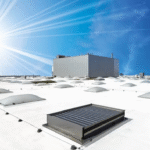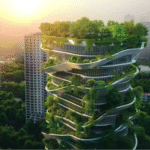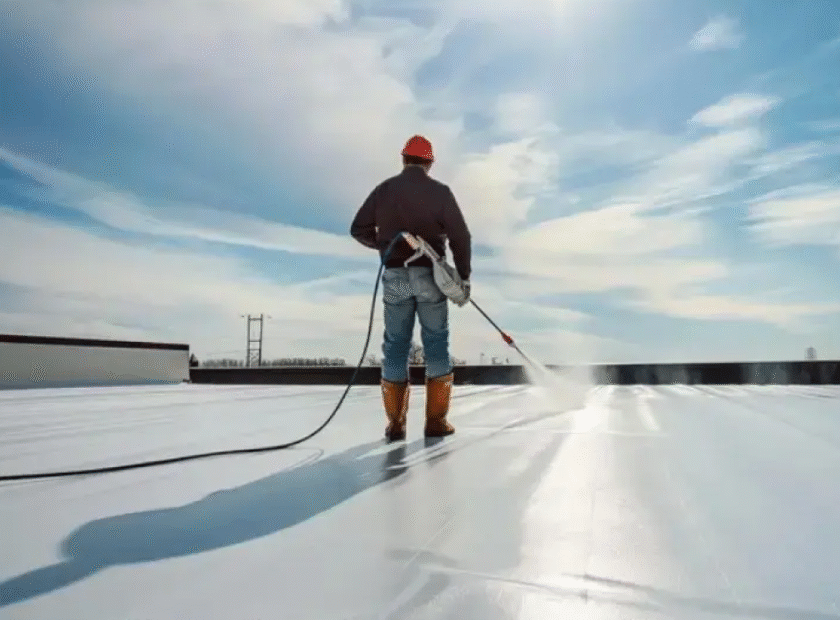
Tackling the Heat: How Heat Reflective Coatings are Transforming Buildings
High Performance Heat Reflective Paint in Saudi Arabia
In the scorching climate of the Middle East, finding effective ways to keep buildings cool has become more crucial than ever. As energy costs continue to rise and environmental concerns take center stage, heat reflective paint emerges as a simple and cost effective solution for both residential and commercial properties.
The Rising Challenge of Heat Management
With temperatures regularly soaring above 45°C (113°F) during summer months, Saudi Arabian buildings face unprecedented thermal challenges The intense heat places significant pressure on buildings, leading to higher cooling demands and increased operational costs. Traditional methods—like heavy reliance on air conditioning—strain the power grid and contribute to rising emissions. Heat reflective paint, however, offers a smart alternative, enhancing building envelopes by reducing heat absorption at the source.
The Science Behind the Solution
At the core of this technology is advanced ceramic microsphere and solar-reflective pigment technology. These coatings are specially formulated to reflect up to 90% of UV radiation and up to 80% of IR, preventing surfaces from heating up and minimizing heat transfer into the interior. Unlike standard coatings, they act as a thermal shield, delivering noticeable temperature reductions indoors.
The key to this technology is a specially developed glass ceramic spheres that contains a vacuum. When these glass ceramic spheres are combined with a strong adhesive, a specially formulated dispersion, and activators, they create what can be described as a “liquid ceramic heat shield tile.” Upon application, this mixture forms a reflective membrane.
Cost reduction through passive air conditioning
In the summer season, the external walls / roof are suitably cooled through reflective properties of the coating rejecting short-wave sunlight and by effective directional evaporation. This combination significantly reduces cooling loads, resulting in lowered energy expenses. The reflective layer takes in moisture that turns into vapor and cools when it comes into contact with sunlight. This process is effective even if the walls / roof aren’t painted white. Noticeable cooling efficiency due to evaporation is attained even with darker shades.
Additionally, maintaining dry exterior walls plays a critical role in preventing the growth of algae, particularly on insulated facades or flat roofs. In hot climates, this approach is particularly beneficial as it effectively minimizes heat transfer from the outside to the inside.
Benefits Beyond Comfort
- Energy Savings: By reducing the demand for air conditioning, buildings coated with reflective materials can see energy consumption drop by 15–30% in hot climates.
- Extended Roof Life: Lower surface temperatures mean less thermal stress on roofing materials, extending their life and reducing maintenance costs.
- Environmental Impact: Reduced energy consumption leads to lower greenhouse gas emissions. Widespread use can contribute to climate change mitigation efforts and help meet sustainability targets.
- Urban Heat Island Mitigation: In dense cities, where concrete and asphalt trap heat, reflective surfaces can help lower ambient temperatures, improving comfort and air quality.
Improved Indoor Air Quality: With less reliance on air conditioning, indoor air is less likely to recirculate pollutants, benefiting occupant health.
Conclusion
Heat reflective coatings are a powerful example of how low-tech solutions can have high-impact results. In an era of rising energy costs, climate volatility, and increasing urban density, they offer a practical, scalable, and affordable strategy to cool our built environment. As cities strive for sustainability and resilience, these coatings are poised to become a standard feature of climate-smart design.




